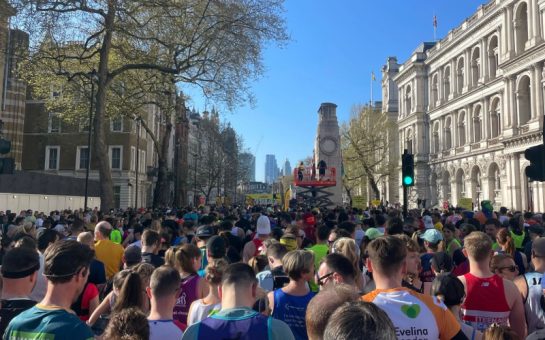The Exhibition Road renovation is billed to become the most accessible cultural destination in the world.

The Exhibition Road renovation, costing £25million, is billed to become the most accessible cultural destination in the world.
However, pedestrian safety is still under fire for the project which is nearing completion next year.
Prince Albert, the original creator of the area in South Kensington, dreamed it would be a hub of culture and industrial creativity.
The road is now getting a make-over, which has raised alarms in the heads of some.
Road safety is an aim of the scheme, yet the curb-free environment, termed ‘shared space’ by planners, causes potential problems for many, including the blind and partially sighted.
Architect Dixon Jones formulated the chequered granite road design, which covers what was once a pavement and carriageway.
The Guide Dogs for the Blind Association, a charity working for the blind and partially sighted, have lobbied Kensington and Chelsea Borough Council since the announcement of the single surface.
Because of this some changes have been made to the original designs.
David Chowdry, Head of Public Policy for the charity, said: “We are getting results but there is still a way to go to see if they’re effective to get the results we want.”
Guide Dogs challenged the Royal Borough in the High Court last year over the council’s plan, arguing safe pedestrian zones are needed.
Following judicial proceedings, an agreement was reached that the council must commission testing on the new designs.
These now include a bumped pavement along the edge of the designated pedestrian area, rather than a seamless join between road and pavement.
However, this corduroy pavement usually indicates staircases to blind people.
Mr Chowdry points out this could cause problems for blind or partially sighted people who are not aware of Exhibition Road’s use of the surface.
Yet the new area still boasts to be more pedestrian friendly.
The road will at times be closed for festivals and other events. The first of these will occur during the Olympics, from the 27th July to 4th August.
Council Leader Sir Merrick Cockwell said this shows the national and international importance of the road.
He added: “It is a result of our commitment to promoting our people, our place and the new public space of Exhibition Road.”
The Exhibition Road Cultural Group (ERCG) represents the collective interests of 18 institutions and organisations in South Kensington, including the Science Museum and the borough authority.
The ERCG claim that all the new measures to promote further pedestrian safety have been implemented, including the removal of coach drop-off point after consulting with various charities.
Representing publicly funded organisations, the group assert they have a responsibility to ensure the broadest audiences can engage with the area, which they believe the changes guarantee.
Paul Cutts, CEO of the group, said: “This is part of the broader strategy to ensure Exhibition Road remains London’s cultural heartland, and a place for anyone with a thirst for creativity and discovery.”
While the scheme claims to have already benefited both visitors and residents, some do not view it so virtuously.
A Twitter user, Alireza Sagharchi, tweeted: “The new Exhibition Road street lights and layout must be the worst in London, a soup of pedestrians, cars and flag poles with 50watt bulbs.”
The project’s proponents also suggest the ambiguous area will mean drivers reduce their speed to 20mph while travelling down Exhibition Road, which is free of street side clutter and geared towards walkers.
But not all critics are so sure this sufficiently protects pedestrians from vehicle users, with the lack of determined road boundaries and pavements.
The borough council have agreed to a monitoring period of two years – the charity keenly awaits the results.
“We do not know how drivers will react to this area,” Mr Chowdry said.
“Monitoring is really important.”




